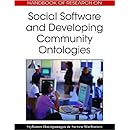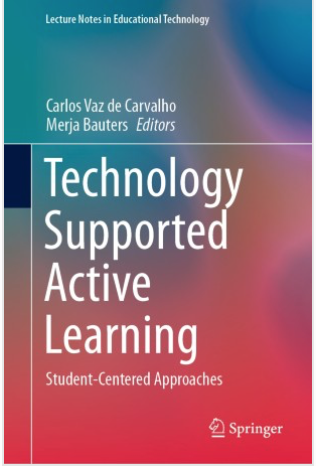
How are affordances dynamic?
February 22, 2007From Perception, Mobility and the Affordances of Portable Computers: An Historical Epistemology of Mobile Computing.
Gamel Wiredu
2005
Gibson (1979) defines affordances as the opportunities for action for the observer provided by an environment. Gibson’s definition mirror what Ortega y Gasset (1941) describes as “facilities” and “frustrations” that are not properties of the world but properties that lay solely in our “interaction with the world” – our interaction with reality.
Gibson, J. J. (1979) The Ecological Approach to Visual Perception, Houghton Mifflin,
Boston, MA.
Gibson referred to the affordances what one could perceive in dynamic interaction with environment, but not the hidden affordances.
Activity departs from a simplistic notion of natural, elementary and unmediated perception that is biological or physiological towards a complex idea of perception as a mode of action that is always mediated by cultural-historically-produced and -communicated tools and signs; that is, by “representations” (Wartofsky 1973).
We understand tools and signs as representations that mediate perceptual actions; that are artificial (socio-cultural); and that are produced and communicated by humans in their ontogenetic and phylogenetic means of existence. We also regard both tools and signs, in general, as artefacts that consist of both signifying and signified properties (Saussure 1983), and in this regard, the perception of an artefact reflects the semiotic variation in modes of representation that perception itself comes to be related to historical changes in other forms of human practice, and in particular, to social and technological practice (Wartofsky 1973). The signifier is the form which the artefact takes, its structure; and the signified is the concept is represents (Saussaure ibid.).
Wartofsky’s semiotic conceptualisation of tools as structural representations (of primary artefacts) and signs as functional representations (of secondary artefacts). In the case of primary artefacts, their structural conceptualisation is based on the idea that they are simply the environmental implements which are of interest or use in production. In the case of secondary artefacts, their functional conceptualisation is founded on their functions as preservers and transmitters of the acquired skills or modes of action or praxis by which this production is carried out (Wartofsky 1973, p.202). Tools that exhibit abstract modes of representation are perceived as tertiary artefacts.
abstracted from their direct representational function … and suggest that they constitute a domain in which there is a free construction in the imagination of rules and operations different from those adopted for ordinary ‘this-worldly’ praxis.
Saussure, F. d. (1983) Course in General Linguistics, Duckworth, London.
Wartofsky, M. W. (1973) “Perception, Representation, and the forms of Action: Towards an Historical Epistemology” in Models: Representation and the Scientific Understanding (Wartofsky, M. ed.) Reidel, Dordrecht.
Ortega y Gasset, J. (1941) “Man the Technician” in Towards a Philosophy of History
(Norton, W. W. ed.) New York.
The designer’s software and applications inputted into the PDA, and which are reflexive of historical modes of human actions, are functional from his or her point of view. However, from the user’s perspective, such ‘functional’ representations are abstract beforehand, during or after the use of the artefact. The PDA was mediating a learning activity that consisted of several goal-oriented clinical actions and human mobility. This mediation also manifested in the mobile computing actions, but they were conditioned by the goal-oriented clinical actions that further dictated the various modes of the PSPs’ mobility – micro, local and remote. In short, these other actions – mainly, clinical and mobility – were the filters or modifiers that transformed the designer’s abstract representations into the user’s functional representations.
In effect, the micro-mobile and locally-mobile clinical actions filtered the abstract representations by nullifying the abstract (designer’s functional) representations, leaving the remnants such as personal organisation, and learning support as the functional representations.The affordance of a portable computer is therefore a direct function of the user’s perception of it as a secondary artefact that exudes functional representations of historical human praxis. Since the notion of functional representations implicitly connotes an active interaction (activity-consciousness) between the user and the portable computer; that is to say, since it connotes mobile computing, we must understand affordances of portable computers as non-static and non-passive, but as active and functional phenomena.
Wireda supports the assumption how affordances emerge in dynamic interaction.
From:
Norman, D. O. (1988) The Design of Everyday Things. New York: Basic Books.
Norman: Affordances are perceived properties of an artifact that indicate how it can be used . Affordances are static properties of physical objects that can be perceived by a user. Furthermore, these properties can invoke a user’s mental model explaining functionality of the object and possible actions. Depending on the properties of the object and the experience of the user, affordances cannot always be easily perceived and may require additional signs: instructions.
Norman’s affordance conception is static and relates the affordances only with the environment and objects. Affordances are always there, the user must just notice them.
From:
Instructive Interaction: Making Innovative Interfaces Self-Teaching
Larry L. Constantine, University of Technology, Sydney
Lucy A. D. Lockwood, Constantine & Lockwood, Ltd.
The twin concepts of affordance and constraint (Norman, 1988) are versatile means for guiding and instructing users. Affordances communicate to the user an invitation to particular actions or uses; constraints limit or restrict these.
Dynamic affordances and constraints are dynamic changes in appearance that invite and channel user actions. Dynamic affordances and constraints were used with great success in the award-winning design for the Siemens STEP 7 Lite integrated development environment for automation programming (Constantine, 2002; Windl and Constantine, 2001).
Here, the dynamics of affordances is mainly related with the predetermined sequence of actions in which certain properties of the tool should be used. However, the users are not determined to take their own action strategies in which new properties of the tools should be applied, thus the Norman’s static affordance concept is still prevalent.
Dynamic affordances by Cook and Brown, 1999.
Cook, S.D.N. and Brown, J.S. (1999). Bridging epistomologies: the generative dance between organisatoral knowledge and knowing. Organisatoral Science, 10(4): 381-400.
The concept of dynamic affordance directs attention to situations, materials or designs as resources that afford doing something in interactions with them. Without the dynamic affordance of that interaction there is no learning or enactment of what is learned. Dynamic affordance is what becomes possible when knowledge is used as a tool in the context of situated activity. Interaction dynamically affords both the acquisition of knowledge and the use of knowledge.
Dynamic interaction with the world opens up the realm in which knowing takes place: the activity of addressing facilities and frustrations dynamically affords knowing and plays enormous role in how knowledge (tacit and explicit at individual and group levels) is generated, transferred and used in organisations.
Cook and Brown assume that the dynamics of affordances is initiated by the ongoing interactions with the environment and objects, where our previous knowledge applied during the activity helps to evoke noticing of certain aspects, affordances – it is knowing how these affordances could support the activity.











Leave a comment